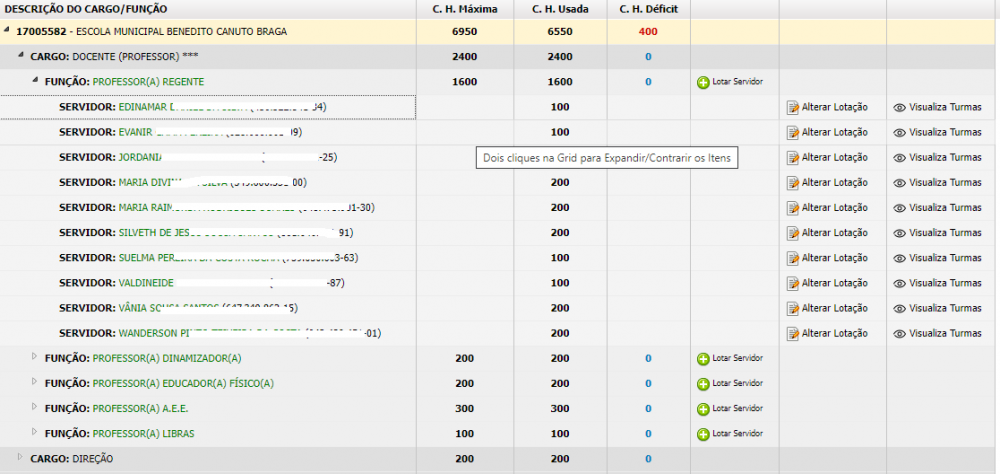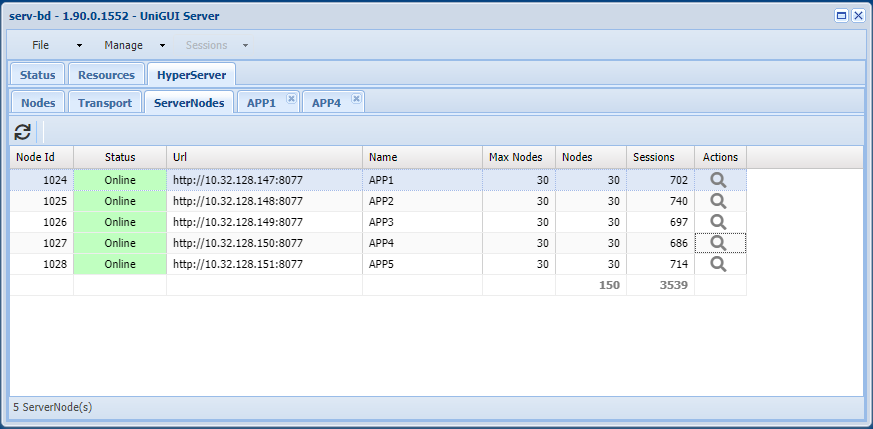-
Posts
626 -
Joined
-
Last visited
-
Days Won
21
Content Type
Profiles
Forums
Events
Posts posted by Wilton Ergon
-
-
-
we realize the complexity of this feature, due to the delay in release, the question, will it work?
-
how did you add all this list, as i tried to play this list of ips, and it only allowed to add 4653 lines
and your list has 14870 lines -
something wrong is not right.
Another week comes to an end, and we're just waiting. -
actually I confused the friend's question, the mentioned component, and for displaying html inside the report builder, or in fastreport.
I use it in reportbuilder, and it's working.
even if in the html there is a url pointing to an image. or even an image embedded in the html.in case of displaying only an image from a url, reportbuilder 21 already has this feature. using the tppImage component
I don't know about fastreport.
-
https://www.delphihtmlcomponents.com/
this component has a plugin for fastreport, and reportbuilder that allows to do this, works very well.
-
we know the enormous challenge that you and your team face every day, we trust in your work.
-
 1
1
-
 1
1
-
-
some position on the release of the version.
-
up.
-
if you are starting now, and your application will have thousands of simultaneous accesses, and even if your concern about spending on servers is something important, creating your system using technologies that do not keep your users connected in sessions, will certainly be the best choice, the unigui is undeniably a powerful framework, but this issue of keeping user sessions active is undoubtedly its Achilles heel
in other structures each open page can be loaded on a different server, the use of cpu and memory on the server is much more optimized, this considerably reduces server costs..
-
uma sugestão.
crie uma enquete para votar nos novos recursos a serem disponibilizados em 2022.
a enquete definiria apenas a ordem em que os recursos seriam implantados.cada usuário poderia marcar 3 opções de recursos, os recursos mais votados, quem concorda com essa ideia, curta este post.
Não estou falando aqui de todo mundo pedindo coisas que estão fora do roteiro, apenas o que já foi prometido.
isso poderia ser feito no portal do cliente, assim somente usuários ativos poderiam votar, nada mais justo deixar aqueles que contribuem com o projeto manterem suas licenças ativas.
-----------
outra sugestão para a enquete, a contagem de votos poderia ser baseada no número de licenças, assim que tiver 1 licença, conta 1 voto
quem tiver 10 licenças conta 10 votos.-
 2
2
-
 3
3
-
-
you will need several application servers to manage this amount of users, at least 10, but of course this depends a lot on how your application was built and optimized.
but wait a little, because the structure currently existing in the hyperserver, cannot handle this amount of users,
the reason is that in the current mode, all requests from all users are sent and retransmitted by the master server.
I'm waiting for a new feature that will solve this.
it would be good for you to work with a rest api, so that your application doesn't have the bank connected all the time, and in order to share part of the load on your system, use connection pooling in your rest api as well.
-
I was thinking..
if the master server, when doing this redirection, sends a token through the request body, when the site is loaded it checks if the token arrived, this way it would be possible to know if who opened the site was a request from the master server, or if was directly opened without going through the load balancer.
you can't warn, alert, or shout, as there are thousands of users, it had to be the application's responsibility to avoid this type of behavior.
-
** If the slave server is disabled and user tries connect to it then re-directing to main server will not work!
yes, I know this cannot be avoided, and you can be sure it will lead to support issues. because my users are very inattentive.
chrome itself can save this address, and when it does the search in the search bar, it will be redirected to one of the slave servers that may be down.
-
if they do, they can generate an overload on a server, since it will not go through the master server, which will check which server has the least users connected, and direct it to the server with the least load.
I don't think it's correct for the user to decide which server to use, this must be done by the balancer that will direct it to the server with the lowest load, or even prevent it from connecting to a server that is not active.
imagine if the user decides to save the address
mysite_app1.mycompany.com.brand I need to disable access to that server...
it will try to connect, and it won't. -
each slave server will have a site with a different address.
will there be a mechanism to prevent the user from directly accessing the system on that server?
ex
master server
mysite.mycompany.com.brslave server 1
mysite_app1.mycompany.com.brslave server 2
mysite_app2.mycompany.com.brslave server x
mysite_appx.mycompany.com.brif the user tries to access directly
mysite_app2.mycompany.com.brit will be redirected to
mysite.mycompany.com.br ?which in turn will make the correct forwarding
and this way?
-
Farshad,
could you let us know if there are any concerns that we should be aware of regarding safety with mode 3
-
On 29/12/2021 at 04:39, Franco Grech said:
Oh vamos lá rapazes. 😩
Use o proxy reverso Apache com balanceamento de carga.https://duckduckgo.com/?q=apache+reverse+proxy+with+load+balance&t=newext&atb=v253-1&ia=web
Funciona. Simples e útil. Deixe o Hyperserver como está. A 3ª opção que você prefere é um pesadelo de segurança !
O uniGUI tem problemas mais importantes que ainda estão esperando para corrigi-los. Não quero vincular o tópico em que os assinantes reclamam da qualidade do suporte .
I already used nginx linux version to load balancer, but the balancing algorithm is not based on unigui open sessions, this caused some servers to be more overloaded than others and when a server was unavailable, it still tried to send the request to the same server, and it is likely that it has not been configured well. but what I realized is that the hyperserver balances more evenly, but in current mode, there is still an overhead when many users are connecting at the same time.
what is the security issue in mode 3 being created? the unigui team could enlighten us about this.
-
we look forward to this new feature;
my customers are not using the system at this time.
but they will come back with everything from January 3rd-
 1
1
-
-
great news
-
On 12/22/2021 at 5:04 AM, Farshad Mohajeri said:
Hello,
Server Farm comes with three different operation modes.
- Pass Through
- Direct
- Url Redirect
Mode 1) Pass Through
(Implemented)
In "Pass Through" mode all requests passes through the master HyperServer. This includes all file requests. Which means your master server can become quite busy when there is a momentary high load. In this mode each slave HyperServer instance communicates with its own Nodes privately. Slaves and related Nodes are isolated from the public access.
It is the slowest mode, but the easiest for uniGUI developers to implement, manage and maintain.
Mode 2) Direct
(Not implemented)
In this mode again all traffic is handled by the master HyperServer, but it will directly communicates with all Nodes from other HyperServer instances. This will improve performance, as the traffic are not relayed through the middle HyperServers.
Mode 3) Url Redirect
(Not implemented)
In this mode each new session is redirected to one of the slave HyperServers. It will be done at URL level, so once the session is redirected, the master HyperServer will not handle the related traffic. For each slave HyperServer Node the traffic is handled directly by that HyperServer.
This is the fastest operation mode, but this requires you to open all of your salves to the internet and assign them public URLs.
as I understand it, mode 3 would be the simplest for you and your team to create the resource in unigui, maybe if you had done a poll showing users how the hyperserver would work, what modes of operation it could have, and which mode it should be given priority, in my view mode 3 would certainly be elected as priority, as all developers look for performance, no matter if it's more complex to configure, as I imagine most users didn't even imagine the hyperserver could have other means of use. as it was never mentioned, at least I never saw anything about what you mentioned just now.
-
 1
1
-
as they say here in my country, I'm in a tight spot, this end of the year I had a high load of connections, as I said, I did what I could at the application level, activating pooling, keeping the bank disconnected, and by far I have performance issues in the database. my problem is precisely in the part of the day (early) where simultaneous connections start, hundreds of users coming in at the same time, and the hyper server (master) cannot handle this demand, and many users cannot open the system, that is it doesn't even load the login screen, the connection to the bank is only made after entering the login data, so there is no problem in the database,
after a few hours, where the peak of users has already reached about 3500, then it starts to normalize, in the already implemented mode, it is not serving me...
what should i do in this case?this generates a huge complaint, as most users cannot access the system, as if the server had a problem...
improve the performance of the master server can solve?
have another machine dedicated only to the master server, as the current one is being shared with the bank server.
but this is a machine with 2 processors with 40 cores, with the latest generation xeon processor, very fast ssd disks...I don't see difficulties in using mode 3, but I imagine that this redirect must be done with some passing of a parameter or token in the url, to prevent the user from connecting directly to a slave server, saving this url.
ex:mysystem.mycompany.com.br
mysystem_serv1.mycompany.com.br
I would have the sites on each server
and the master server would redirect based on loads...
there would have to be a way to prevent the user from connecting directly using the url
mysystem_serv1.mycompany.com.br
dear Farshar, I saw that a new version of unigui was released with some new features, it would not be the case to complete what has already been started in relation to the hyperserveralternating between unigui changes and very complicated
an implementation of a new feature starts, it is not finished, and it starts doing other things.
remark: my expectation and to have at least about 50000 simultaneous users, I will need dozens of server then?
-
Build 1552
-
I turned on connection pooling, I'm now working with a database in disconnected mode, this greatly reduced the active connections with the database, even with more than 3000 users, it doesn't get 200 active connections. from what I realized the problem is not in the connection with the database, but with the initial load of the application, there has nothing to do with the database. the hyperserver doesn't seem to be able to handle this amount of simultaneous connections, see that at this moment with 3359 users, the bank servers are using low cpu





hyperserver multi server large number users
in General
Posted
🙌 🙌 🙌 🙌 🙌 🙌 🙌 🙌 🙌 🙌 🙌 🙌 🙌 🙌 🙌 🙌